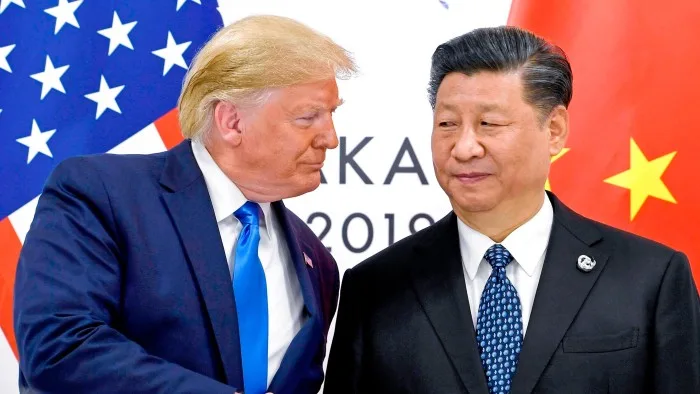Unlock the White House Watch newsletter for free
Your guide to what Trump’s second term means for Washington, business and the world
US President Donald Trump has signalled his openness to cutting tariffs on China ahead of Saturday’s high-stakes talks between the world’s two largest economies, as both sides seek to de-escalate their trade war.
In a post on his Truth Social network, Trump suggested the US could almost halve its tariffs on Chinese goods, which now stand at 145 per cent, while calling on Beijing to open up its markets to American products.
“80% Tariff on China seems right! Up to Scott B,” he said, in a reference to the Geneva meeting led on the US side by Treasury secretary Scott Bessent.
Bessent and trade representative Jamieson Greer are set to meet China’s vice-premier, He Lifeng, as the two countries seek to look for ways to unwind their huge levies on each other in a tit-for-tat confrontation that threatens the global economy.
Despite the US’s current steep tariffs on China, data on Friday showed that China’s overall exports grew sharply in April, strengthening Beijing’s hand ahead of the talks.
As Chinese companies diverted trade flows from the US to south-east Asia, Europe and other destinations, exports rose 8.1 per cent in dollar terms compared with a year earlier, China’s customs service said.
Trump’s “liberation day” tariff announcements on April 2 rocked global markets, which have rebounded after the president paused most of his “reciprocal” levies.
But that recovery has petered out and the US duties on China remain in place, as have China’s retaliatory tariffs of up to 125 per cent on US imports.
While the S&P 500 index has broadly recovered from the steep losses it sustained just after April 2, it has fallen 0.5 per cent this week and was little changed on Friday.
Libby Cantrill, head of public policy at US bond group Pimco, warned that while “some softening of tariffs over the next few weeks” might be likely, “the chances of a durable substantive deal coming out of these weekend talks is very low”.
She stressed that trade deals historically took an average of 18 months to agree and a further 25 to implement, and that the US-China relationship had “only deteriorated” since Trump’s first term.
“We might see some positive reaction from the equity market, but any deal would be in name only,” she said.
Trump’s suggestion on Friday that Washington could lower duties on Beijing came a day after he concluded a deal to provide tariff relief to the UK, his first since he kicked off the trade war in April.
But people familiar with the matter said the figures Trump floated in his Truth Social post were probably a negotiating tactic ahead of Saturday’s talks rather than an actual target.
China’s commerce ministry said this week it had decided to engage with the US “based on thorough consideration of global expectations, China’s own interests and calls from US businesses and consumers”.
Beijing had previously said the US should cut tariffs as a precondition for negotiations but has since softened its position.
Bessent, who has characterised the Geneva meeting as an attempt to de-escalate the trade war, has also labelled the US and China’s current tariffs on each other as “not sustainable”.
The US Federal Reserve warned this week that Trump’s tariffs had increased policymakers’ uncertainty and could increase both inflation and unemployment.
Washington has been locked in negotiations with other countries for the past month, since Trump paused his tariffs on most trading partners for 90 days.
On Friday, Trump wrote on social media that there were “Many Trade Deals in the hopper, all good (GREAT!) ones!”
Privately, however, many foreign officials have indicated that talks with Washington appear to be progressing slowly, with US officials unable to articulate specific demands.
Additional reporting by William Langley in Guangzhou and Joe Leahy in Beijing

